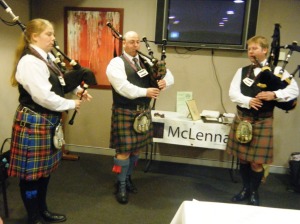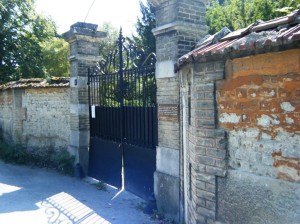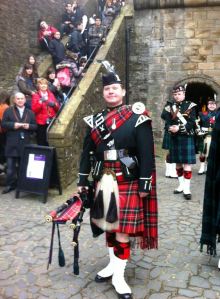Last year (2012) we passed along the fabulous Marne Valley, cutting through the geographic middle of the Champagne region, when everywhere was relaxed and often closed for business. That was because it was late November. The grape harvest (vendanges) was successfully behind them, the pressing finished for the season and the proprietors were planning their skiing holidays!

Vendanges (grape harvest) at Charly and all along La Marne.
This year the grape harvest was still ultra-active in the Marne Valley during early October as we passed through, and what a delight it was. Walking around the villages (Sillery, Damery, Dormans, Charly) we saw life ticking along at a much faster pace. The streets were full of tractors with trailers behind carrying crates of freshly picked grape clusters; there were queues to use the bins provided for the remains of the pressing; there was much hosing down of roads and yards where the juice had been flowing from the collection bins; white vans flew across bridges in the early hours of the morning full of what we’re not sure but probably tools of the trade. Whilst in fields the white vans were sitting dotting the hills, buses parked almost at random having delivered the pickers from the relatively nearby camping grounds. Every town and village had new temporary communities in their caravans, campervans and tents – they seemed to have popped up where last year there were none.

Passing through the lock at Mareuil we see grape picking up close.

Mareuil vineyard grape picking.

Mareuil lock-keepers house surrounded by grape vines.

After pressing the grape clusters they are carded or used for liquors.

Damery coop.

Camping for the vendanges.

Andre Goutorbe winery note to pickers showing where to go.

Grape cluster after pressing.

Van with grapes just picked.

After pressing the grape clusters, queues for the bin.

After pressing the grape clusters removal.

Stewart with grape juice lorries.

Vendanges activity on hills one misty morning.

Camping for Vendanges.

Vendanges activity, like the front garden.

Grapes at Vincelles

Janie picking (stealing!) grapes.

House at Vincelles

Sign explaining closed for vendanges.

Grapes from vine and supermarket

Vendanges sign at Charly Lenoble Champagne house

Markets at Charly

Mareuil vineyard grape picking.
In the wonderful town of Damery we were surrounded by campsites but rarely saw the squads of workers who must have been there somewhere .. no doubt up in the vineyards spread around the hills. Across the bridge from our mooring we found the restaurant Au Bateau Lavoir and headed there for an aperitif one evening. There was a concrete paved terrace surrounding it with empty tables and chairs which we had to wade our way through to find one big step into the restaurant. We thought we’d have to stay outside, but we’d been observed and a lady came out and said she had a ramp. This consisted of two sturdy sections of aluminium which she could lay down as a track up the step. So with a bit of a struggle and help from her and some fellow customers in we went.

Photo of the Au Bateau Lavoir business card, as delightful as it looks here.
Naturally we ordered a bottle of Champagne (choosing one from the vineyard of the Proprietor of the restaurant) and sat and enjoyed the ambience. Soon after a couple arrived and went up more steps to what looked like their restaurant section with many tables set for dinner. A local, standing at the bar with beer in hand, called out to Madame (we later found out this was Beatrice and the wife of the proprietor) who’d disappeared around the back, “you have customers up there” (in French of course). The newcomers were Americans and from their conversation with Beatrice we heard they weren’t sure which Champagne to order. Noting some language difficulties between them we invited them to taste a glass of ours. From then on, Ed and Carole spent the next few hours with us.

Lesley, Carole, Janie, Ed and Stewart at Au Bateau Lavoir.
In between times it seemed the pickers and other workers from the vineyards had returned, mostly sitting outside on the terrace looking rather jaded and in need of refreshment. One ordered a glass of something that was bright green .. a startlingly bright one. I asked Beatrice (in my French) what it was but she couldn’t understand me .. and pointed out that verre and vert (glass and green) are pronounced the same way .. but still she couldn’t understand me, until she realised I’d said boisson (drink) and not poisson (fish)! More work required in French language study.

Damery from Au Bateau Lavoir.
We weren’t planning on eating at the Bateau Lavoir or staying out late into the dark. Stewart’s loan chair was not behaving: It was difficult to manoeuvre and the batteries had no life so would become flat after only a few kilometres. Our new friends, Ed and Carole, had also not intended staying long as they had to drive on roads unknown into Paris to their hotel. But none of us would have missed the fun of our meeting for the challenge of getting ‘home’. We heard via email that they made it safely (despite the unfamiliar roads) back to their hotel.

Endellion moored at Damery.
However, Stewart had a bigger challenge in the dark. First we had difficulty getting out of the pub on the two sections of ramp, then over the bridge with the wheelchair batteries beeping because they were almost flat, and finally there was just a tiny ledge, barely as wide as the chair along the water’s edge for Stewart to use to get to the pontoon and on board. We made it!
The following morning we bought six bottles of Champers from Beatrice: ‘Remy Payer’ selection Brut at 13.50 euros per bottle. When I asked her if she could recommend a taxi to take us to Hautvillers (the nearby village famous as the home of Dom Perignon and his Abbey) Beatrice said, “I will drive you”. What time she asked. And so at 11.00am we pottered across the bridge with Janie pushing the spare manual chair and Stewart in the power chair.

Beatrice driving us to Hautvilliers (Janie’s photo).
(Note: there were no wheelchair accessible taxis in this region, and in most of France, which would have enabled Stewart to stay in his chair, so the manual chair was essential as Stewart could transfer into the passenger seat and fold the manual one into the boot). The power chair was left in her garage.

Sculpture at Cumieres

Sculpture at Cumieres

Opening the press manually at the Hautvillers Pressoir.

Turning the grapes and pulling them into the centre to gently recrush.
Beatrice didn’t just take us to our chosen destination; she took us on a guided tour first into the neighbouring riverside village of Cumiers – a place that we couldn’t stop at because the pontoon was not wheelchair accessible. We toured around the back of the village along the river bank to see the iron sculptures telling the story of the Champagne seasons. She took us past the tourist boat we’d seen running up and down the river with us these past four days or so .. Beatrice pausing to chat to the owner of the business as their cars passed window to window in the narrow roads.

Dom Perignon street signage at Hautvillers.
Then on up the hill to Hautvillers with vineyards coming right down to us as we drove along. Beatrice pointed out “this is the end of our vines here, these on this side have been picked already,” etc. Finally she drove us to the spectacular view and around the village of Hautvillers to ensure we could see it all by car. She stopped, eventually, by the tourist office with a promise to collect us if we had any difficulty finding a taxi for the return trip.

Remote controlled aerial device for video making, at Hautvillers.
The tourist office (with a rare helpful person) suggested we visit the Pressoir we’d passed with Beatrice in the car. To our surprise outside the pressing room there was a man operating a ‘drone’ as Janie called it, an unmanned aerial device, remote-controlled, with camera attached. A Korean man said hello and asked if we’d like to look inside. Yes, of course and how lovely of him (thinking he was a tourist like us). He told us the flying camera was making a video about his winery.. explaining that he and his brother were originally from Korea and had been adopted by a French family, this was their winery: Joseph Desruets.

Janie’s photo of our group watching the aerial video camera
He stepped inside with us where there was an ancient press in action manually operated turning the grape clusters over and pulling them into the middle and gently presses them again – seven times a day on the hour. This old press, made of oak, was built in 1885. On the matter of statistics, during this frenzied period of pressing and bottling across the Champagne region they are producing 268,000,000 bottles generating around 4.4 billion euros – around 55 percent of it being consumed within France (from Comité Champagne, a trade organisation established by statute to manage the common interests of Growers and Champagne Houses).
We made it safely back to Au Bateau Lavoir via taxi where Beatrice was waiting outside with ramps down so we could once more enjoy the restaurant and say our thanks and farewells. We will definitely be back.
Another favourite place at Damery, having visited it last year, was Andre Goutorbe Champagne house where their new tasting room was open and as we entered, to be predicted (the Belgians are the fifth largest international consumers of Champagne), there was a table full of tasters from Belgium. We told them in English the story of their compatriots who last year bought 24 cases! No pressure we said.

Sunflowers at Dormans

Man stops to watch us as we potter beneath.

Pushing the Marne river, we are gliding down.

Le Bac restaurant (the ferry) at Charly.

Janie and Stewart at the restaurant Le Jardin Provencal in Meaux.
We had several more delightful stops before we were almost at the end of the Champagne region and entering Brie country. We were happy with our stock of Champagne, sitting underneath Janie’s bed waiting to be shared during the ‘festive season’ back in Paris. We were almost exhausted with our growing knowledge of the art of Champagne making and drinking. If you too are interested in this amazing money-making engine we can recommend the Comité Champagne website: http://www.champagne.fr/en/champagne-economy/key-market-statistics.
Apparently the wine market for France, both its own consumption and exports, has been in decline – all except the market for Champagne and perhaps some of the elite brands of red and white (source Wikipedia: http://en.wikipedia.org/wiki/French_wine#Trends) .
The last few days of our journey down the Marne into Brie country (and the lovely mustard of Meaux) were also, and as usual, packed with events.

Five varieties of Brie, purchased at Meaux, for our Brie taste-off.
Chiefly they related to the boat. With leaves now falling we had blockages in our engine water cooling system below the filter which meant dropping anchor in the very fast-flowing Marne to clean it out. Then when we went to pull the anchor up we found the winch wouldn’t work .. but later we managed to fix this problem ourselves. Hooray. We also had success repairing our windscreen wiper which misbehaved in our few days of consistent rain.
We are still using one of two loan power chairs we’ve had to use while the Invacare service technicians have been unable to repair Stewart’s own chair (dating back to before our visit to Reims six weeks ago). The solution: Stewart has purchased a new (e-Bay) model to collect in New York on our way through to Australia.
And now we have a slight problem with our black water (septic) tank which we are struggling to empty (through the mains system) due to an unidentified fault which no amount of expense, plumber, pump-out tanks or mechanics seem to be able to fix. But we’re holding out OK! And someone must be able to sort out such a basic system.. soon please!
We are now back in Paris and thinking about Australia and our journey to get there.
Today we are celebrating Stewart’s birthday with a little treat in store at a restaurant on the Ile Saint Louis. We will definitely be opening one or more of those bottles of Champagne, stored under Janie’s bed, before day’s end.
We will toast absent friends and family who couldn’t be here with us .. and look forward with great excitement to our time in warm and sunny Australia.

































































































































































































